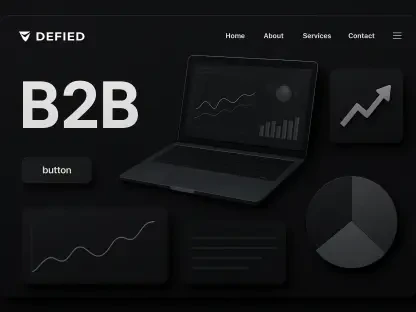In 1941, the Bulova watch company aired the first-ever TV ad: a 10-second spot during a Brooklyn Dodgers and Philadelphia Phillies game, featuring the succinct slogan, “America runs on Bulova time.” The Phillies won that day, the ad cost $9, and less than two decades later, the television advertising industry was valued at $128 million. Today, the descendant of that Bulova spot is video marketing, a digital marketing strategy that includes video ads, branded entertainment, virtual reality experiences, educational and instructional content, personalized sales videos, and more—any tactic that uses videos to build brand awareness, connect with audiences, and drive sales.
The use of video marketing offers a dynamic and engaging way for ecommerce businesses to reach their target audience effectively. Video content has proven to be a powerful tool that can significantly influence purchasing decisions and improve overall business performance. This article will walk you through various steps and strategies to leverage video marketing for the growth and success of your ecommerce business.
Step 1: Define Objectives
The first step in any successful video marketing campaign is to clearly define your objectives. By understanding exactly what you aim to achieve, whether it’s increasing brand awareness, driving sales, or improving customer engagement, you can tailor your video content to meet these specific goals. Thoroughly defined objectives provide a roadmap that guides all subsequent decisions in your video marketing strategy.
Setting clear objectives also helps in measuring the success of your campaigns. For instance, if your primary goal is to increase brand awareness, you might track metrics such as view counts, social shares, and audience reach. On the other hand, if driving sales is your main objective, conversion rates and revenue generation would be the key metrics to focus on.
By having concrete goals, you can create targeted video content that aligns with your business needs and marketing strategy. This step ensures that every video produced has a purpose and contributes to the overall success of your ecommerce business.
Step 2: Understand Your Target Audience
Understanding your target audience is crucial for creating effective video content that resonates with viewers and drives them to take action. Knowing who your audience is, their preferences, pain points, and behaviors allows you to create videos that speak directly to their needs and interests. This step involves conducting market research, analyzing customer data, and creating detailed buyer personas.
Market research helps you gather valuable insights into your audience’s demographics, interests, and purchasing behavior. Analyzing customer data, such as website analytics and social media interactions, can provide a deeper understanding of how your audience engages with your brand and content. Creating buyer personas involves compiling this information into fictional profiles that represent your ideal customers.
Armed with this knowledge, you can tailor your video content to address specific audience segments, making it more relevant and engaging. Personalized video content is more likely to capture viewers’ attention, encourage them to watch the entire video, and ultimately take action, whether that’s making a purchase, subscribing to your channel, or sharing the video with others.
Step 3: Strategize Your Video Campaigns
Once you have a clear understanding of your objectives and target audience, the next step is to strategize your video campaigns. This involves planning the types of videos you will create, their placement within your marketing funnel, and the platforms on which they will be distributed. A well-thought-out strategy ensures that your video content aligns with your overall marketing goals and reaches the right audience at the right time.
Different types of videos serve different purposes within the marketing funnel. For example, brand awareness videos introduce your brand to a broad audience and generate interest, while product demonstration videos showcase specific products and their features. Customer testimonial videos build trust and credibility, whereas instructional videos provide value and foster customer loyalty.
Deciding on the platforms for distributing your videos is also crucial. Popular platforms include YouTube, social media channels like Facebook and Instagram, and your own website. Each platform has its unique audience and engagement metrics, so it’s essential to choose the ones that best suit your target audience and marketing goals.
Step 4: Produce Video Content
The production phase is where your video concepts come to life. Producing high-quality video content requires careful planning, scripting, filming, and editing. It’s essential to maintain a consistent brand message and visual style across all videos to reinforce brand identity and recognition.
Begin by drafting a compelling script that aligns with your marketing objectives and resonates with your target audience. The script should effectively communicate your message while maintaining viewer engagement. Once the script is finalized, plan the logistics of the shoot, including location, equipment, and talent.
Filming should be done with attention to detail to ensure high production quality. This includes proper lighting, clear audio, and visually appealing scenes. After filming, proceed to the editing stage, where you can enhance the video with graphics, captions, music, and effects to make it more engaging.
High-quality video production reflects positively on your brand and can significantly impact viewer perception and engagement. Investing time and resources in this phase ensures that your videos not only look professional but also effectively convey your brand message.
Step 5: Share Video Content
After producing your videos, the next step is to share your content with your audience. Effective distribution maximizes the reach and impact of your videos, ensuring that they are seen by the right people at the right time. This involves leveraging various platforms and channels to promote your videos and drive traffic to your ecommerce site.
Social media platforms are excellent for sharing video content due to their massive user bases and high engagement rates. Platforms like YouTube, Facebook, Instagram, and TikTok allow you to reach different segments of your audience and drive traffic to your ecommerce site. Additionally, embedding videos on your website and including them in email marketing campaigns can enhance user experience and boost conversions.
Promoting your videos through paid advertising, such as YouTube ads or Facebook ads, can further expand their reach and target specific audience segments. Collaborating with influencers or partnering with other brands can also amplify your video’s visibility and credibility.
Step 6: Evaluate Performance
Evaluating the performance of your video marketing campaigns is crucial to understand their effectiveness and identify areas for improvement. By analyzing various metrics such as view counts, engagement rates, conversion rates, and revenue generated, you can gain valuable insights into how well your videos are performing.
Use these insights to refine your video marketing strategy, making adjustments where necessary to optimize your content and distribution methods. Continuous evaluation and refinement ensure that your video marketing efforts remain effective and aligned with your business goals.









